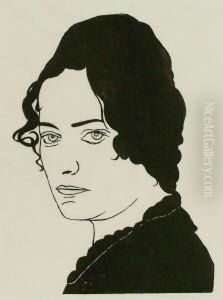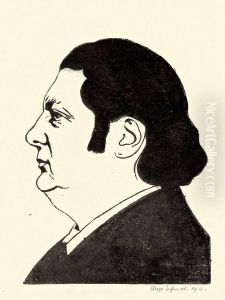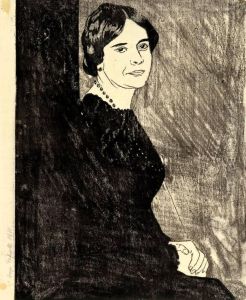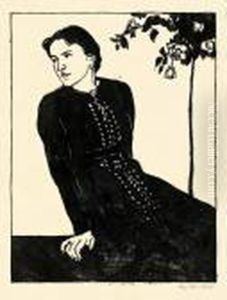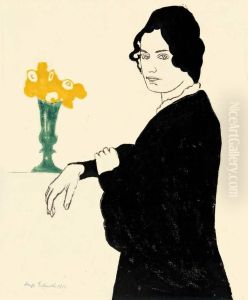Hugo Erfurth Paintings
Hugo Erfurth was a renowned German photographer known for his portraits of prominent figures in the art and cultural world during the late 19th and early 20th centuries. Born on October 14, 1874, in Halle, Germany, Erfurth developed an interest in photography at an early age. He pursued this passion and became one of the most sought-after portrait photographers of his time.
Erfurth's career began in earnest when he opened his first studio in Dresden in 1906. His work was characterized by its insightful and sensitive portrayal of the subject's personality and character. Erfurth had a talent for creating a comfortable and intimate atmosphere for his sitters, which allowed him to capture more than just their physical likeness. His portraits are notable for their sophisticated use of lighting and composition, which brought out the inner life of his subjects.
During his career, Erfurth photographed many notable artists, including Otto Dix, Oskar Kokoschka, and members of the avant-garde movement Die Brücke. He also worked with dancers, writers, musicians, and intellectuals, creating a visual record of the cultural elite of the time. His work was not limited to the famous; he also took great care in photographing ordinary people, believing that everyone deserved to have their essence immortalized through his lens.
The rise of National Socialism in Germany and the outbreak of World War II had a profound impact on Erfurth's work. Although he continued to work throughout the war, the cultural landscape around him had changed drastically, and many of his previous subjects were either in exile or had fallen out of favor with the Nazi regime.
After the war, Erfurth moved to West Germany, where he continued to work until his death on February 14, 1948, in Gaienhofen on Lake Constance. His legacy is preserved through his extensive body of work, which remains an important historical record of the cultural figures of his time and a testament to his skill as a photographer. Hugo Erfurth's photographs are held in collections of major museums and have been the subject of exhibitions, underscoring his significant contribution to the field of portrait photography.
